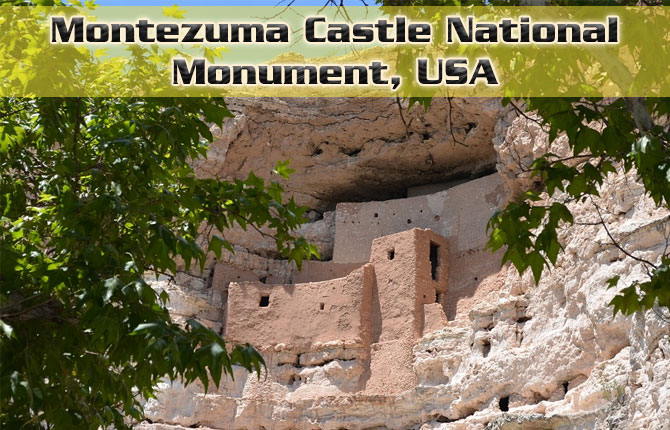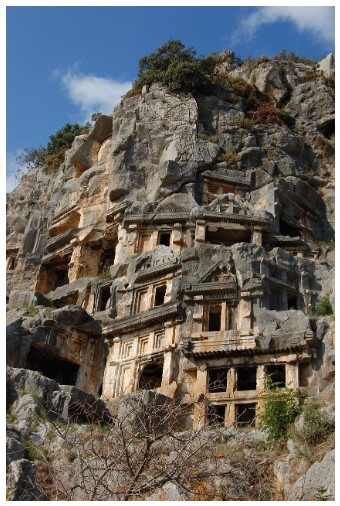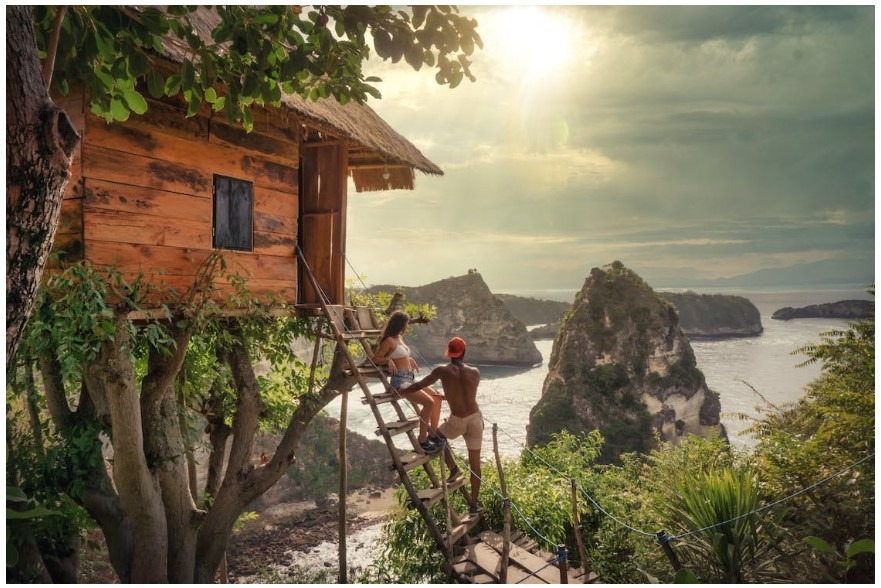It’s a certain fact that man, try as he might, just cannot compete with the beauty of the natural world. Instead, he builds his life upon and around it by creating dwellings which take advantage of nature’s beauty and uniqueness.
While we usually think of homes and other buildings as being separate from nature, there are homes that blend right into it. These homes are functional, or at least they once were, and give the inhabitant the security we all want in a house.
Interested in reading about some examples of such wonders? Check out some of the interesting natural homes below!
Montezuma Castle National Monument
This monument is actually a group of ancient dwellings located in Arizona. They were built upon a limestone cliff by the Sinagua people during the pre-colonial era. The castle itself is located about 90 feet up on a limestone cliff. The cliff is sheer, but the dwellings are among the best-preserved in America.
The preservation here is partly due to its location, which is in a natural alcove that provides protection from weather elements. While access to the structure is very difficult, this proves that the Sinagua were very darling and skilled people, especially in the fields of construction and engineering.
The castle is well-protected from the threat of any enemy, as one needs ladders in order to access it. However, the main reason behind the height and structure here was probably to escape the possible natural disasters such as flooding from Beaver Creek.
Sunland Baobab
Most tree houses or tree dwellings are built high among the branches, but that’s not the case with the famous baobab tree in Sunland Farm, Limpopo Province within South Africa. As the baobab trees age, they tend to hollow out in the center. The tree still goes on growing and living, but there’s a sizeable space inside that might even accommodate some people.
For the Sunland Baobab, the hollowed-out enormous trunk has been converted into a bar and wine cellar! Yes, you can have some drinks and hang out inside a tree. Understandably, this age-old tree is a popular tourist attraction.
Petra
This famous historical landmark and tourist attraction in Jordan was curved right straight into a big rock (“Petra” means “rock” in Greek) at the foot of the Jebel-ah Madhbah Mountain. Petra was actually an ancient city established by the Nabataeans, probably around the 5th century B.C.
If Petra’s majestic facade is familiar to you, it has been a popular location for film shootings, most notably for Indiana Jones and the Last Crusade and The Mummy Returns. Historically, though, Petra was famous for being a center for caravan trade. It was in control of the commercial routes running through Gaza and was also a fortress-like area. This was mainly due to the towering rocks that enclosed it and the perennial stream for their water supply.
This water supply and security was what made this desert city so successful. The area was actually at risk of flash floods, but water cisterns, conduits, and dams controlled that supply. As a result, the city had a lot of water stored away for the drought season.
Setenil de las Bodegas
The Andalucian pueblo of Setenil de las Bodegas (just near the cliff-top town of Ronda) is famous for the houses that were built underneath the overhang of a massive rock. These curious under-the-rock white houses are a top tourist draw.
There are also many locals living in this area, quite literally being ‘under a rock’ for most of their lives. In fact, this location is actually quite practical for living purposes. The natural Setenil caves are perfect for easy living, as one doesn’t need to build a whole house in order to protect themselves from the elements.
All that was required to live under the overhanging rocks was the façade of a house. This is why people have probably been living in this place since the pre-historic era.
The Necropolis
Formerly an ancient Greek town named Lycia, Myra is presently located in Turkey’s Antalya Province. Obviously, there are a lot of postcard-pretty ancient ruins (such as the amphitheater which looks over the tomb of Saint Nicholas aka Santa Claus). Still, the city’s most popular attraction is the necropolis, a series of rock tombs carved right straight onto the cliff faces.
A Treehouse
There’s a wooden treehouse located at a park of the Château de Langeais (a medieval castle) in Loire Valley, France. This is an interesting concept that most of us are familiar with.
Another example is the massive but charming treehouse located at the Alnwick Garden, Northumberland, England. The unique features of this house include the walkways through the shady trees. This way, visitors can take a whole tour of the place without ever touching the ground!
This massive but charming treehouse is located at the Alnwick Garden, Northumberland, England. The unique features of this house are the walkways through the shady trees.
Subterranean Living in Australia
Coober Pedy is an opal-mining town in South Australia which is also notorious for its inhospitable heat — it can hit as high as 125 degrees Fahrenheit.
The severe heat has forced its residents to build underground structures, which they call “dugouts,” where the temperature is much cooler. It has become some sort of a mini-underground village which includes a mansion, a church, a jewelry shop, pubs, and restaurants.
Sassi di Matera
Sassi di Matera is a series of ancient cave dwellings located in Matera, which is a city in the region of Basilicata, located in Southern Italy. This area was the home of the troglodytes (cave-dwellers) who were allegedly the first people to settle in this country.
Igloos
The igloo is probably the most widely recognized example of a natural home. When the surroundings are icy and the temperatures are sub-zero, n igloo can provide warmth and shelter in a very short period of time.
Igloos are typically built with snow and mostly used as temporary dwellings by Inuit hunters. However, a lot of people build igloos as permanent or semi-permanent shelters. In some areas, there are whole Inuit villages that consist of just igloos as dwellings. Check out Interesting Facts about Igloos to know more about these natural homes.
Malator
Malator is the name of the earth house located in Druidston, Pembrokeshire, Wales. Future Systems is the architectural firm that designed this futuristic-looking house. It is also referred to as a “Teletubby house”, as it resembles the earth houses in the hit children’s TV series ‘Teletubbies’.
Earth House in Switzerland
An earth house is a type of dwelling that uses the natural terrain to form the walls and the ceiling/roof of the house. Earth houses are popular in modern-day architecture, as they’re eco-friendly and energy-efficient. The Swiss architect Peter Vetsch has also designed earth houses in Switzerland.
Conclusion
Natural homes are a fascinating sight, but they’re also quite practical. In the discussion above, we’ve seen how people in the past made use of natural materials to create sturdy, secure, and almost self-sufficient homes. With the increasing trend of eco-friendly home springing up these days, it’s a good idea to read more about such dwelling and see how we can emulate them.







